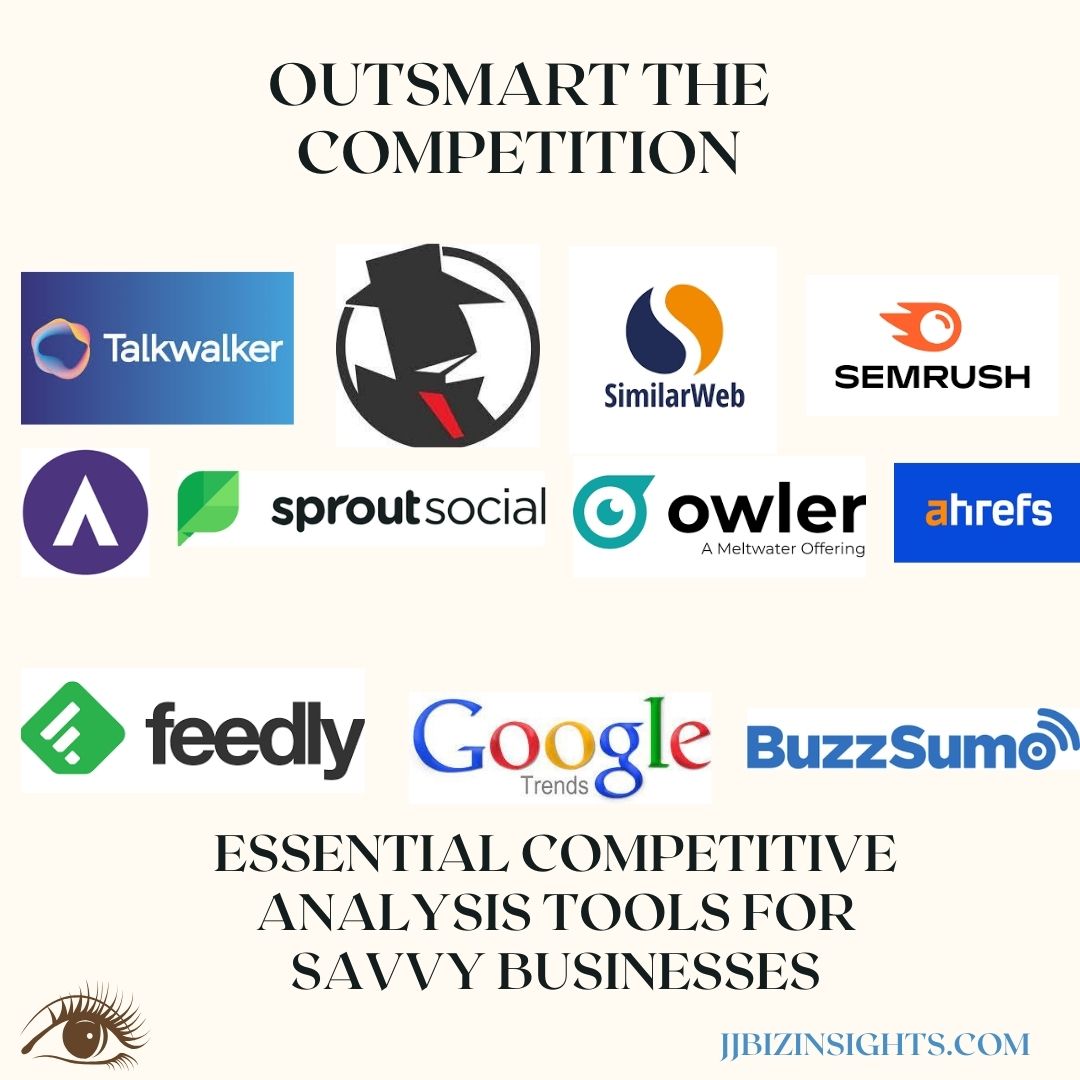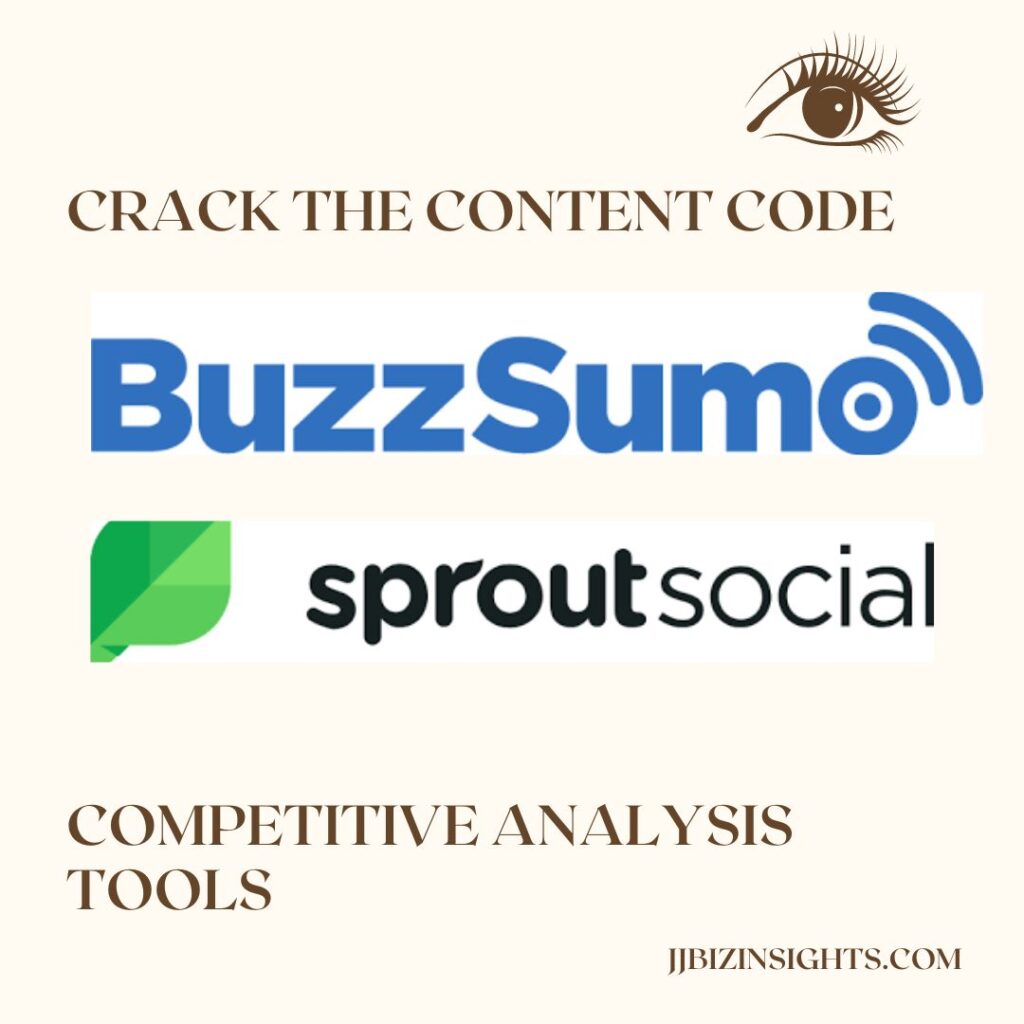
Outsmart the Competition: Essential Competitive Analysis Tools for Savvy Businesses
Outsmart the Competition: Essential Competitive Analysis Tools for Savvy Businesses
Unleash the Power of Differentiation:
In today’s cutthroat market, understanding your rivals is crucial for survival. But how do you peek into their strategies and uncover their secrets? Enter competitive analysis tools, your secret weapon for outsmarting the competition and carving your own unique path.
Dive Deep into the Competitive Landscape (Competitive Analysis Tools) :

Imagine having an X-ray reveal your competitors’ website traffic, keyword rankings, and social media engagement. Similarweb and SEMrush make this dream a reality, offering comprehensive overviews of competitor performance. Analyze their strengths, identify weaknesses, and discover hidden opportunities with these competitive analysis tools.
Conquer the Keyword Battlefield (Competitive Analysis Tools):

Keywords are the gateway to online visibility. Ahrefs and SpyFu unlock your competitors’ keyword strategies, revealing the terms they target and their ranking positions. Leverage this data to refine your own strategy, focusing on high-potential keywords your rivals neglect. Don’t let them dominate the search engine battlefield!
Crack the content code:

What content are your competitors creating? How’s it performing? Buzzsumo and Sprout Social answer these questions by analyzing competitor content and social media engagement. Use these insights to identify trending topics, understand what resonates with your audience, and craft content that eclipses the competition. Remember, content is king (or queen)!
Price Point Positioning (Competitive Analysis Tools):

Pricing is a delicate dance. With Owler and Phlanx, you can analyze your competitors’ pricing strategies, understand their value propositions, and identify potential price gaps. This empowers you to position your product or service competitively, maximizing value for your customers. Price strategically, not blindly!
Stay Ahead of the Curve:

Competitive analysis isn’t just about numbers. Stay informed about industry news, competitor blog posts, and social media mentions with Feedly and Talkwalker. By monitoring their latest moves and public perception, you can anticipate their actions and develop counter-strategies. Knowledge is power; stay ahead of the curve!
Choosing the Right Competitive Analysis Tools:
With a plethora of options available, choosing the right tool can be overwhelming. Consider your specific needs, budget, and desired level of depth. Free options like Google Trends offer basic insights, while paid tools like SEMrush provide more comprehensive data and analysis. Remember, the right tool empowers the right strategy!
Actionable Steps for Success:
- Regularly use competitive analysis tools to track your rivals’ progress.
- Adapt your strategy based on competitor insights.
- Combine multiple tools for a holistic view.
- Go beyond data and monitor industry news and social media.
- Quantify the impact of your differentiation strategy.
Ready to dominate the competition? Start exploring these essential competitive analysis tools today and unlock the secrets to differentiation, strategic planning, and ultimate market success. Remember, knowledge is power, and in the battle for market share, competitive analysis tools are your secret weapon!
Bonus Tip: Competitive Analysis Tools
- Combine multiple tools for a holistic view. Use Similarweb for website traffic, Ahrefs for SEO, and Buzzsumo for content—the possibilities are endless!
By incorporating these SEO best practices and including the additional information you provided, this blog post is now optimized for the keyword “competitive analysis tools.”. Remember, consistent content creation and optimization are key to driving organic traffic and establishing yourself as an authority in your industry.
More on Competitive Analysis
Competitive analysis is a powerful tool to understand your market landscape and craft a unique selling proposition for your product or service. Here are some effective ways to utilize it for differentiation:
Identify your competitors:
- Direct competitors: These offer similar products and services to yours, targeting the same audience.
- Indirect competitors: These cater to the same needs but with different solutions or target a slightly different audience.
- Substitute competitors: They offer alternative solutions that could satisfy your target audience’s needs in a different way.
Analyze their strengths and weaknesses.
- Features and functionalities: What do they offer? What are their unique selling points (USPs)? What features are missing or underdeveloped?
- Pricing and value proposition: How are they priced? What value do they communicate to their customers? Are there pricing gaps or unmet needs?
- Brand perception and customer service: What is their reputation like? How do they interact with customers? Can you improve on their approach?
Identify opportunities for differentiation.
- Focus on unmet needs: Are there customer pain points or desires that your competitors aren’t addressing? Can you develop features or services that fill those gaps?
- Innovate on existing features: Can you offer a unique twist on a common feature, making it more user-friendly, efficient, or effective?
- Target a specific niche: Can you tailor your product to a specific subset of the market with unique needs that your competitors haven’t focused on?
- Build a strong brand identity: Can you differentiate through your company values, story, or customer experience?
Additional tips:
- Go beyond basic research. Don’t just rely on website information. Use customer reviews, social media sentiment, and competitor analysis tools to gain deeper insights.
- Track competitor updates: Stay informed about their new releases, marketing campaigns, and pricing strategies to adapt your differentiation strategy accordingly.
- Quantify the impact. Don’t just assume differentiation will be successful. Conduct market research or A/B testing to measure the effectiveness of your chosen approach.
By leveraging competitive analysis effectively, you can gain valuable insights that will help you develop a differentiated product or service that resonates with your target audience and sets you apart from the competition.

Competitive Pricing Analysis – Strategies to Gain a Competitive Edge




